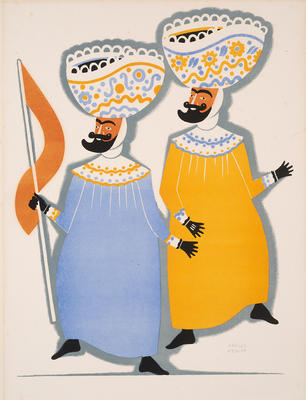Dance of the Chinelos from Dances of Mexico
Maker and role
Artist: Carlos Mérida, Guatemalan, 1891-1984
Year
1939
See full details
Object detail
Media/Materials
Lithograph
Measurements
14 1/2 x 11 3/4in (36.8 x 29.8cm)
Credit line
Gift of Susan Toomey Frost
Accession number
2014.31.6
Object type
Department
Location
Further information
"Chinelos" is a generic word, now almost obsolete, applied to grotesque figures in dance and theatre. It dates from the colonial period in Mexico, like this dance, which is of mixed Spanish-Indian style and is danced only at carnival time in certain villages of the Tepoztlan region in the state of Morelos. Merry, dyonisiac almost, it does not follow set forms like most of the other Mexican dances. Instead each performer improvises violently, running, jumping, or stamping out the rhythm standing in one place. The costumes are highly spectacular and very original, characterized chiefly by the great turban each dancer wears, balancing it as they leap, with considerable grace and skill. The dance-music is provided by wind instrument ensembles.
Subject period


Public comments
Be the first to comment on this object record.